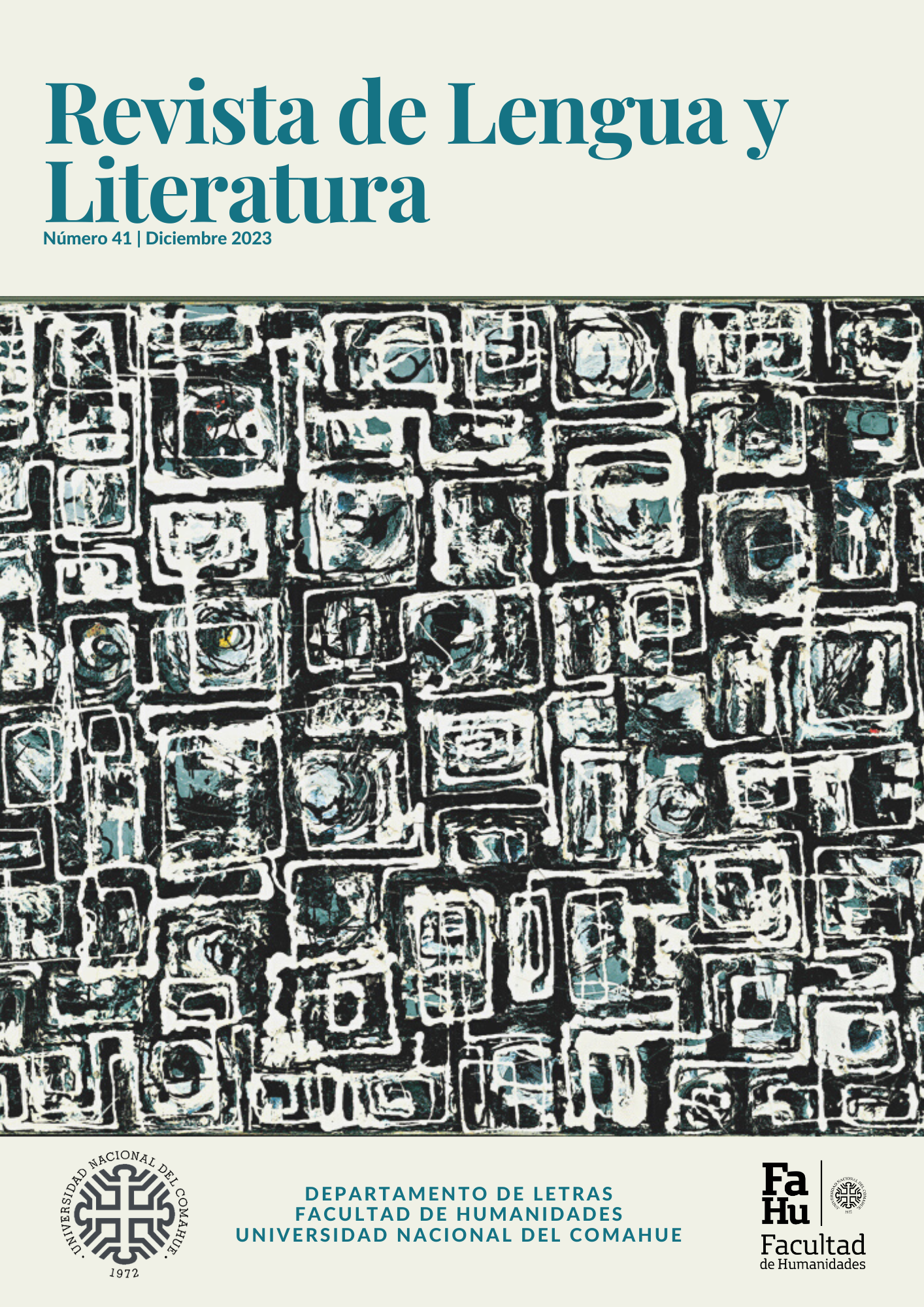The simultanism in Apollinaire and Proust
Keywords:
Poetry, Novel, Cubism, Juxtaposition, SimultaneismAbstract
Apollinaire and Proust share a historical time, the time ofavant-garde. Although they didn’t meet or influence each other, they share the cubist aesthetic, one of them at poetry andthe other oneat prose. Apollinaire and his poetry are located at atransition momentbetween a world that will be devastated by the First World War and anotherone thatarises,more modern and disruptive of artistic tradition. Two poems are selected to account for simultaneism andjuxtapositiontechnique,characteristic of cubism.Proust represents inÀ la recherche du temps perduthe world ofbelle époque,in anon-linear journeyinto the mind, juxtaposing different moments in the lives of characters,according to the current of simultaneism.This aesthetic, typical of cubism, points out different aspects of a character or an object, not only perceived through different spatial angles, but also in the course of time.This features of proustian writing are examined in the first novel of the writer,Du côté de chez Swann.
Downloads
References
Apollinaire, Guillaume (1917). Conferencia “L’esprit nouveau et les poètes”. https://www.site-magister.com/esprit-nouveau.pdf
Apollinaire, Guillaume (1920). Alcools. Paris: Gallimard.
Apollinaire, Guillaume (1926). Caligrammes. Paris: Gallimard.
Apollinaire, Guillaume (1914). Méditations esthétiques. Les peintres cubistes. Université
Paris-Sorbonne: LABEX OBVIL, fuente: Guillaume Apollinaire, (Méditations esthétiques) Les peintres cubistes. (1913). Paris: Figuière, 84 p., 6pl. http://obvil.paris-sorbonne.fr/corpus/apollinaire/meditations-esthetiques
Apollinaire, Guillaume (1997). Caligramas. Madrid: Cátedra (para la traducción al español de los poemas de Apollinaire).
Barthes, Roland (1985). “Proust y los nombres” en El grado cero de la escritura. México: Siglo XXI.
Cogan, Gaëlle (2014). Proust. Du côté de chez Swann. Paris: Le Petit Littéraire.
Deleuze, Gilles (1995). Proust y los signos. Barcelona: Anagrama.
Dezon-Jones, Elyane (2015). Introducción a la edición Du côté de chez Swann. Paris: Librairie Générale Française.
Fernández-Cozman, Camilo Rubén (2021). “¿Quién habla en un poema? Locutores y alocutarios. El caso de un poema de César Vallejo”. Boletín de la Academia Peruana de la Lengua. vol. 69, n° 69. http://portal.amelica.org/ameli/journal/497/4973490013/Genette, Gérard (1966). Figures I. Paris: Du Seuil.
Macheray, Pierre (2015). “Proust et la question de la spacialité” en https://philolarge.hypotheses.org/1614
Martin, Jean-Clet (2006). “Entre destruction et construction: Delaunay”. Chimères, n° 61, pp. 49 a 77. Édition Ères. https://www.cairn.info/revue-chimères-2006-2-page-49htm
Matamoro, Blas (2018). “Apollinaire, Picasso y el cubismo poético. Cuadernos Hispanoamericanos, n° 492, junio 1991. https://www.cervantes virtual.com>obras apollinaire>.
Poulet, Georges (1982). L’espace proustien. Paris: Gallimard.
Proust, Marcel (1983). Por el camino de Swann. Buenos Aires: Hyspamérica Ediciones Orbis, S. A.
Proust, Marcel (2014). Du côté de chez Swann. Paris: Le Livre de Poche.
Proust, Marcel ((2014). À l’ombre des jeunes filles en fleur. Paris: Le livre de Poche.
Ribeiro Baltor, Sabrina (2001) « A personagem proustiana e o cubismo». Caligrama: Revista de Estudos Romȃnicos. Rio de Janeiro. pp. 157-170.
Solas, Silvia Angélica (2004). “La ausencia de Picasso en la novela proustiana”. V Jornadas de Investigación en Filosofía. Universidad Nacional de La Plata. Facultad de Humanidades y Ciencias de la Educación. Departamento de Filosofía. La Plata. https://www.aacademica.org/000-094/46.pdf
Viart, Dominique edit. (1996). Jules Romain et les écritures de la simutanéité, Lille: Presses du Septentrion.
Yurkievich, Saúl (1968). Modernidad de Apollinaire. Buenos Aires: Losada.
Downloads
Published
How to Cite
Issue
Section
License
Copyright (c) 2023 Revista de Lengua y LiteraturaLa aceptación de colaboraciones por parte de la revista implica la cesión no exclusiva de los derechos patrimoniales de los autores a favor del editor, quien permite la reutilización bajo Licencia Atribución-NoComercial-SinDerivadas 2.5 Argentina (CC BY-NC-ND 2.5 AR)
Usted es libre de:
Compartir — copiar y redistribuir el material en cualquier medio o formato
La licenciante no puede revocar estas libertades en tanto usted siga los términos de la licencia
Bajo los siguientes términos:
Atribución — Usted debe dar crédito de manera adecuada, brindar un enlace a la licencia, e indicar si se han realizado cambios. Puede hacerlo en cualquier forma razonable, pero no de forma tal que sugiera que usted o su uso tienen el apoyo de la licenciante.
NoComercial — Usted no puede hacer uso del material con propósitos comerciales.
SinDerivadas — Si remezcla, transforma o crea a partir
El simple hecho de cambiar el formato nunca genera una obra derivada, no podrá distribuir el material modificado.
No hay restricciones adicionales — No puede aplicar términos legales ni medidas tecnológicas que restrinjan legalmente a otras a hacer cualquier uso permitido por la licencia.





